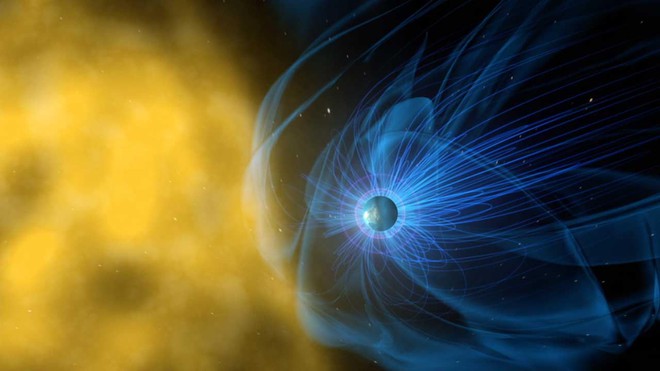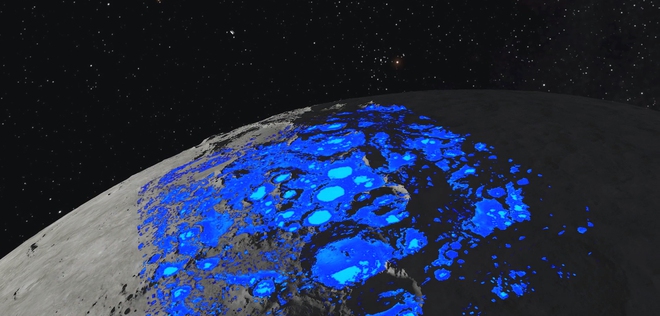New theory: water on the Moon is blown by the “wind” from the Earth
- Tram Ho
The researchers found evidence that traces of water lay inside meteor craters and were trapped in tiny particles of matter – similar to tiny snowballs.
While trying to figure out the origin of these strange water numbers, many experts have assumed that these countries were caused by interactions between the Earth and the Moon, backed by both the atmosphere and the magnetosphere. Although water is an indispensable part of life, water is not a rare resource in space. As long as there is a “depression”, water can exist inside a meteorite or lurking under a thick layer of ice of some cold celestial body.
Considering the relatively “close” distance between the Earth and the Moon, the splashing water from our house to Hang’s house is not too unbelievable. However, when exposed to the sun and cosmic radiation all day, water on the surface of the Moon is unlikely to last for long.

The word book of the Earth.
To account for more moisture than expected on the Moon, the scientists proposed a hypothesis: water is formed from protons “rains” produced by the solar wind. Hydrogen ions collide with the oxide minerals found in lunar dust and rocks, causing chemical bonds to decay, thereby having the basis to combine with oxygen to create water. This hypothesis sounds very plausible, and we should be able to confirm it as we continue to observe water molecules exposed to the harshness of the Universe.
The Earth is protected by magnetosphere against countless ions emitted from the Sun. This shield not only covers the roof of mankind, but is also blown away by the solar wind and forms a drop of water. Over a period of several days each month, the Moon would pass through a portion of the magnetosphere and be temporarily protected from the Sun.
Just recently, a group of scientists from many countries have been using the Japanese Kaguya exploration satellite to accurately indicate when the Moon entered the magnetosphere. Combined with data from the mineral detection engine on the Indian moon probe Chandrayaan-1, experts received unexpected results.
In short, they discovered that the two timelines did not match. The amount of water on the Moon’s surface does not change during the time the Moon moves in the magnetosphere and avoids the Sun.
This result can lead to many conclusions.
One is the solar wind hypothesis that produces water that is completely wrong, and somewhere below the surface of the Moon is a water bag that supplies the surface with liquid.
Another possibility allows the solar wind hypothesis to stand: Earth’s magnetic field has continued the solar wind’s devastating work.

Traces of water on the surface of the Moon.
Previous research results have shown that a plasma curtain directly related to the magnetosphere can release hydrogen ions similar to the solar wind. Investigations showed that this amount of ions shoots much to the polar regions of the Moon. Although the power cannot be as great as the solar wind, the theory above holds true: water can still form on the surface of the Moon in this way. There is still another possibility that oxygen from the atmosphere could somehow reach the Moon, especially during periods of Earth’s geomagnetic fluctuation.
All the above statements are purely hypothetical. Currently, the maps showing the density of water on the Moon’s surface do not match the available scientific models. However, the new map shows standing water at high latitudes, the area located on the equator of the Moon, so there is still a lack of data to confirm or negate any hypotheses.
The scientific community focuses on this problem because sooner or later we will build the Moon base. If you understand the mechanism of ice and water formation here, the brave people on the front lines will not have to worry about an essential resource for life. How convenient would it be if the Earth could scatter rain on the Moon.
Consult ScienceAlert
Source : Genk
